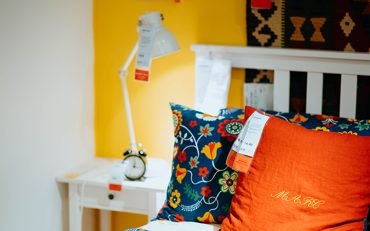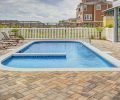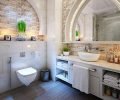In the fast-paced world of electronics, circuit board prototyping plays a crucial role in bringing innovative ideas to life. Whether you’re an engineering student, hobbyist, or a professional developer, building a prototype helps test concepts, identify design flaws, and improve the final product. By using a practice circuit board, beginners and experts alike can safely explore design principles, soldering techniques, and component testing before moving on to full-scale PCB manufacturing.
What is Circuit Board Prototyping?
Circuit board prototyping is the process of creating a preliminary version of a printed circuit board (PCB) that serves as a functional model of the final product. This prototype is used for testing and validation. Instead of committing to a large production run, designers use it to check for errors, optimize layouts, and ensure all components work together as expected.
Prototyping can involve hand-wiring circuits on breadboards or building test boards using CNC machines or etching processes. It may also include using software tools like Eagle, KiCad, or Altium to design and simulate circuits digitally before manufacturing a prototype.
Why Use a Practice Circuit Board?
A practice circuit board is an essential tool, especially for beginners. It allows one to experiment with components such as resistors, transistors, diodes, and ICs without the pressure of perfection. Practice boards—also called protoboards or perfboards—come with a grid of holes and copper pads or strips where components can be soldered easily.
Here’s why using a practice circuit board is so important:
- Hands-On Learning: It’s a safe way to learn soldering and component placement without risking an expensive PCB.
- Error Detection: Helps identify layout or connection issues early in the process.
- Flexibility: You can modify the circuit easily before committing to a final design.
- Cost-Efficiency: Practice boards are much cheaper than ordering custom PCBs for every design iteration.
- Skill Building: Improves confidence and accuracy when working on real circuit board prototyping projects.
Steps to Build a Prototype Using a Practice Circuit Board
- Design the Circuit:
Start by drawing a circuit diagram using software or on paper. Identify the components you need and understand how they are interconnected. - Choose the Right Practice Board:
There are several types, such as stripboards (where rows are connected) or dot-style boards (where each hole is isolated). Choose one that matches your circuit’s needs. - Layout the Components:
Position the components on the board for optimal space usage and minimal wire crossings. Planning your layout saves time and reduces errors. - Soldering:
Carefully solder each component onto the board. Double-check orientation for polarized components like LEDs or capacitors. - Wiring:
Use jumper wires or soldered bridges to connect different components. Trim excess wire and inspect connections for cold joints or shorts. - Testing:
Power the circuit and test functionality. Use tools like multimeters or oscilloscopes to verify voltages, continuity, and signal integrity. - Refine the Design:
Based on your test results, make necessary adjustments. It could be a component change, rerouting wires, or optimizing power supply placement.
Tools Needed for Effective Prototyping
To start with circuit board prototyping and make full use of a practice circuit board, you’ll need the following tools:
- Soldering Iron and Solder
- Desoldering Pump or Wick
- Wire Strippers and Cutters
- Tweezers and Needle-Nose Pliers
- Multimeter
- Breadboard (for initial testing before soldering)
- Component Kits (resistors, capacitors, LEDs, ICs, etc.)
Benefits of Prototyping Before PCB Fabrication
Jumping directly into PCB manufacturing without testing can lead to costly mistakes. Prototyping allows for:
- Functionality Testing: Ensures all parts operate as intended.
- Heat and Power Management: Helps assess thermal issues and voltage stability.
- User Interface Feedback: If your board interacts with users, you can adjust the UI components for ergonomics and usability.
- Shorter Iteration Cycles: You can spot and correct flaws quickly before finalizing the design.
Advancing to Custom PCB Design
Once you’ve validated your design on a practice circuit board, it’s time to transition to a custom PCB. Using CAD software, you can convert your working prototype into a detailed PCB layout. The layout includes:
- Precise component footprints
- Routing of signal and power traces
- Ground planes and vias
- Design rules for manufacturing
After creating your design, you can submit the Gerber files to a PCB fabrication service. They’ll produce a professional-grade board ready for testing and mass production.
Final Thoughts
Circuit board prototyping is an indispensable part of electronic design and development. Whether you’re learning or refining a complex system, a practice circuit board provides a hands-on, affordable, and flexible platform to explore your ideas. By combining theoretical knowledge with practical skills, you can confidently transition from concept to reality.
In today’s electronics landscape, innovation thrives on iteration—and circuit board prototyping is the foundation that supports this creative journey.








